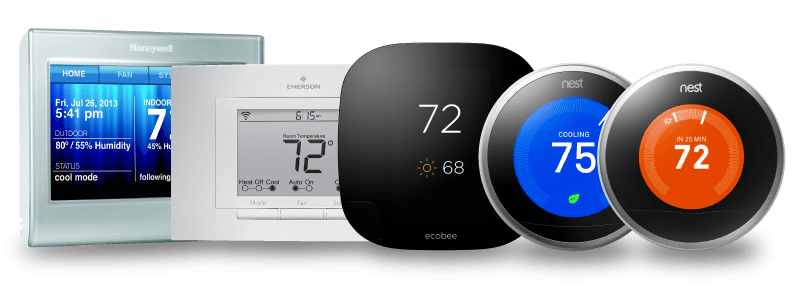For many renters, cost-saving improvements are out of reach
As energy prices continue to rise and concern regarding climate change and the impact of our energy usage grows, consumers are increasingly looking to energy efficiency measures as a means of reducing both their bills and environmental impact.
However, what is often lost in conversations around efficiency is the harsh reality that when it comes to energy, saving money and reducing usage is often a luxury only available to those in higher income brackets. This sad bit of irony rings especially true for a specific and sizeable segment of Australians – renters. According to census data, rental properties account for nearly 30% of Australian houses, about 2.3 million homes.1
This is the focus of a recent article in The Conversation, titled “Renters are being left out in the cold on energy savings: here’s a solution.” In the article, authors Robert Crawford and Koel Wrigley examine the accessibility issues that plague many Australian renters when it comes to energy efficiency. Crawford and Wrigley also offer some possible solutions. Here’s what you need to know.
Energy efficiency: out of reach to those who need it most
The majority of rental properties in Australia are in desperate need of energy-saving improvements. In Victoria, only 58% of private and 55% of public rented homes have some insulation, compared to 95% of owner-occupied.2
Unfortunately, as energy costs continue to rise, those who stand to benefit most from updates and efficiency measures cannot afford to make such costly improvements. There is a clear correlation between long-term renting and low income in Australia. For more than 20% of long-term renters, half of their income is spent on rent.3 Furthermore, 17% of all private renters receive some form of government assistance.4
What’s the problem?
One of the greatest barriers for renters in improving efficiency is split incentives, or when “two parties engaged in a contract have different goals and levels of information.”5 According to the International Energy Agency’s estimates, globally each year more than 3,800 petajoules of energy – approximately 65% of Australia’s total energy use in 2013-146 – is lost due to split incentives.7
Legislation is also a barrier to improved efficiency for Australian renters. One example Crawford and Wrigley cite is that of property repairs. Per current Australian law, landlords are able to offset the entire cost of any repairs made to rental properties against their income in the same financial year. However, any repair must be “like-for-like.”8 For instance, if a broken gas hot water heater was replaced by the landlord with a solar system, that would be considered an improvement and not a repair. Thus, the entire cost of the improvement(s) cannot be offset in the same financial year. This example illustrates how legislation is creating a disincentive for updating outdated or broken appliances and systems with newer, more energy efficient alternatives.9
A number of state tenancy laws also require tenants to return the property he or she is renting to the same condition as when it was first occupied10 – yet another deterrent to improved energy efficiency.
Possible solutions
The authors present a couple of possible solutions, which were vetted and supported by a sample group of landlords, tenants and real estate agents. The first is to change the classification of energy efficiency improvements to repairs under tax law, allowing landlords to “offset the entire cost of the improvement in the same financial year.”11 The second solution is mandatory minimum efficiency standards for rental properties.
In order to create solutions that empower renters and actually encourage them to invest and take ownership in improved energy efficiency, tenants and landlords will have to find common ground. The solutions outlined above are evidence that this is possible.
Read more
To read The Conversation article, click here.
- http://www.censusdata.abs.gov.au/census_services/getproduct/census/2011/quickstat/2GMEL?op%20endocument&navpos=220
- http://theconversation.com/renters-are-being-left-out-in-the-cold-on-energy-savings-heres-a-solution-65712
- https://www.ahuri.edu.au/__data/assets/pdf_file/0013/2227/AHURI_Final_Report_No209_Long-term-private-rental-in-a-changing-Australian-private-rental-sector.pdf
- https://www.ahuri.edu.au/__data/assets/pdf_file/0013/2227/AHURI_Final_Report_No209_Long-term-private-rental-in-a-changing-Australian-private-rental-sector.pdf
- http://theconversation.com/renters-are-being-left-out-in-the-cold-on-energy-savings-heres-a-solution-65712
- http://www.industry.gov.au/Office-of-the-Chief-Economist/Publications/Documents/aes/2015-australian-energy-statistics.pdf
- https://www.iea.org/publications/freepublications/publication/mind_the_gap.pdf
- http://theconversation.com/renters-are-being-left-out-in-the-cold-on-energy-savings-heres-a-solution-65712
- http://theconversation.com/renters-are-being-left-out-in-the-cold-on-energy-savings-heres-a-solution-65712
- http://theconversation.com/renters-are-being-left-out-in-the-cold-on-energy-savings-heres-a-solution-65712
- http://theconversation.com/renters-are-being-left-out-in-the-cold-on-energy-savings-heres-a-solution-65712








